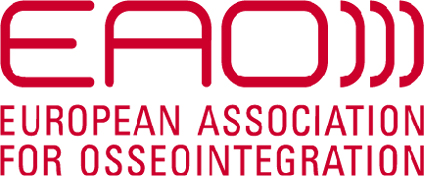Risks and complications
Risks for bone substitute materials
To achieve optimal results, 40% of cases require augmentative procedures before implants are placed. In the aesthetic zone, this figure increases to 90%.
The risks associated with bone augmentation depend on a number of factors, most of which are more relevant than the properties of the bone regeneration materials used. These factors include: the immunological status and systemic diseases of the patient; the patient’s compliance, oral hygiene and lifestyle; the morphology of the defect; the bone quantity and quality; and the type of implant treatment (immediate placement, loading, etc.) being utilised.
“The risks associated with bone augmentation depend on a number of factors, most of which are more relevant than the material itself”
What are the limiting factors in peri-implant regeneration?
- simultaneous regeneration of bone and soft tissue
- presence of oral biofilm
- regeneration on a hard, non-vascularised surface
- the pressure put on mechanical loading during mastication
The patient’s condition should be taken into account, as the wound healing process may be compromised as a result of:
- a history of periodontitis
- diabetes mellitus
- irradiation
- anti-resorptive medication
- smoking
- previous implant failures
Peri-implant tissues have fewer hemidesmosomes and lower levels of perfusion compared to natural teeth. Peri-implant regeneration must be carried out in a hypovascular and hypocellular tissue. There are many techniques which could be used to achieve this, but 90% of the graft’s nutrition comes from the periosteum, and this has to be split to allow flap extension. The speaker outlined a formula for ensuring success: making sure there is adequate space for bone to grow and raising a tension-free flap.
In order to improve the interaction with bone, bone regeneration materials (BRM) are manufactured to be similar to human bone. They show: an interconnecting pore system, a neutral pH and an appropriate resorption rate for bone healing (Kolk et al. 2012).
It is becoming increasingly common for allograft materials to be harvested from living donors, especially from coxarthrosis patients. Allogeneic bone can be considered a reliable alternative with minimal morbidity, due to the reported low failure rates in the maxilla – 2.4% (Monje et al. 2014) – and an implant survival rate of 95.3% in the mandible (Nissan et al. 2011).
“It is becoming increasingly common for allograft materials to be harvested from living donors”
Not all risks can be eliminated. In theory, however, 1:10 of potential infections are covered by the product’s company liability insurance (Nissan et al. 2011). Decellularisation cannot be ensured in 100% of cases. Although small traces of DNA remains can be found, they have been shown to not have any antigenicity. It is recommended that this theoretical risk be included in the patient pre-operative information, although there have been no documented cases in the dental field. Current legal regulations only require that origin, sterility and traceability data are included when using allografts.
Most synthetic bone substitutes are denser than allogeneic bone, and do not have an interconnected structure with similar pore size and distribution to cancellous bone, as allogeneic bone does (Klein et al. 2009). It has been shown that synthetic bone substitutes are incapable of vascular ingrowth, and elicit more fibrous tissue. Larger pores, with a diameter of about 400–600µ, have been reported to better promote blood vessel formation (Ghanaati et al. 2013). The osteoconductivity of bone substitutes is determined by bone-like pore structures.
“Although not all risks can be eliminated, allogeneic bone can be currently considered to be safe”
The main problem associated with autogenous and allogeneic bone is rapid resorption. Because of this, it is recommended that they be supplemented with a mix of xenografts or alloplasts, using less than 50% of the ratio (usually around 25% of bone substitutes). The more the patient’s local and general condition deviates from the ideal situation (i.e. the riskier their situation is), the higher the proportion of autogenous bone can be used.
Before augmentation procedures are performed, a risk analysis should be carried out to identify: anticoagulants, anti-resorptive medications, any immunodeficiency conditions or irradiation. the German Association of Oral Implantology (DGI) has a risk-evaluation sheet for implants in patients taking anti-resorptive drugs (www.dginet.de/web/dgi/laufzettel-bisphosphonate).



